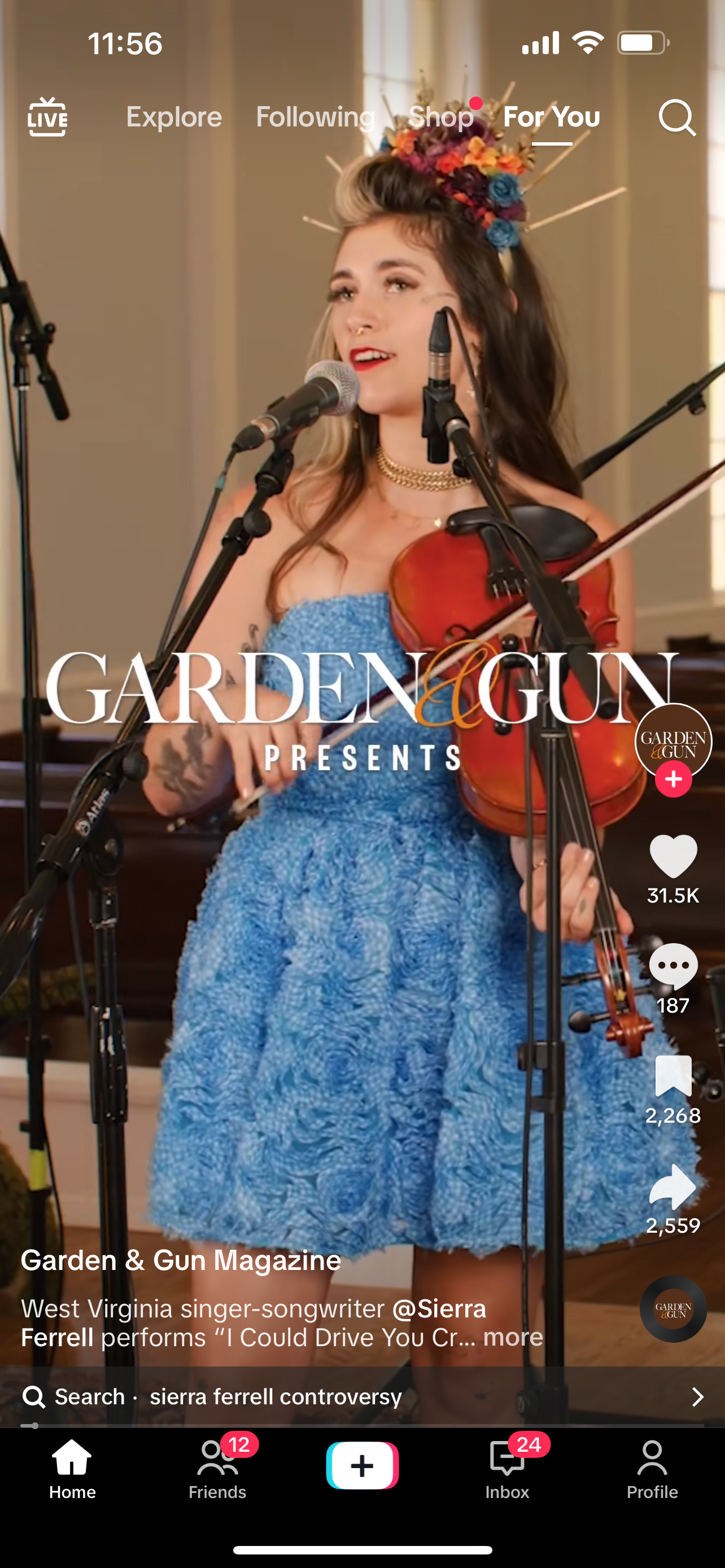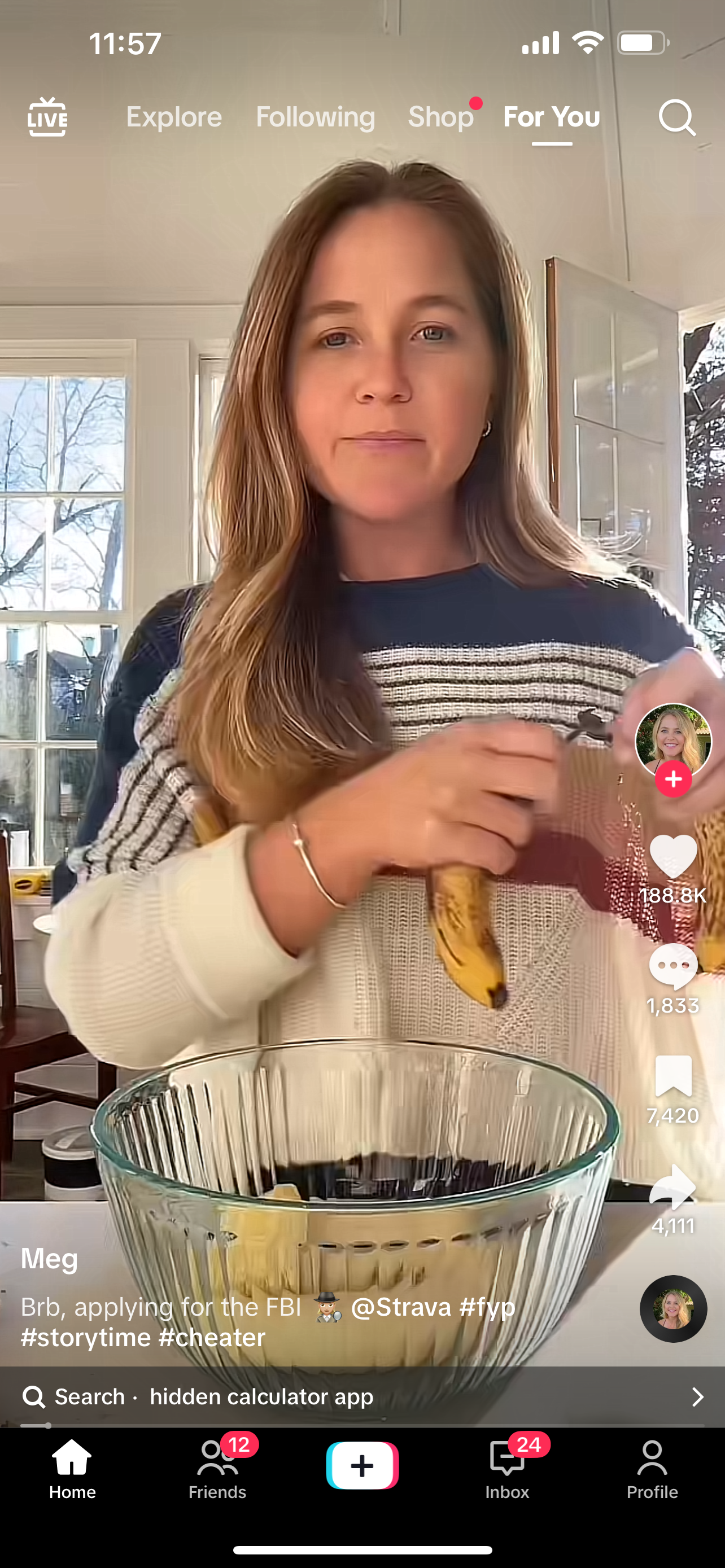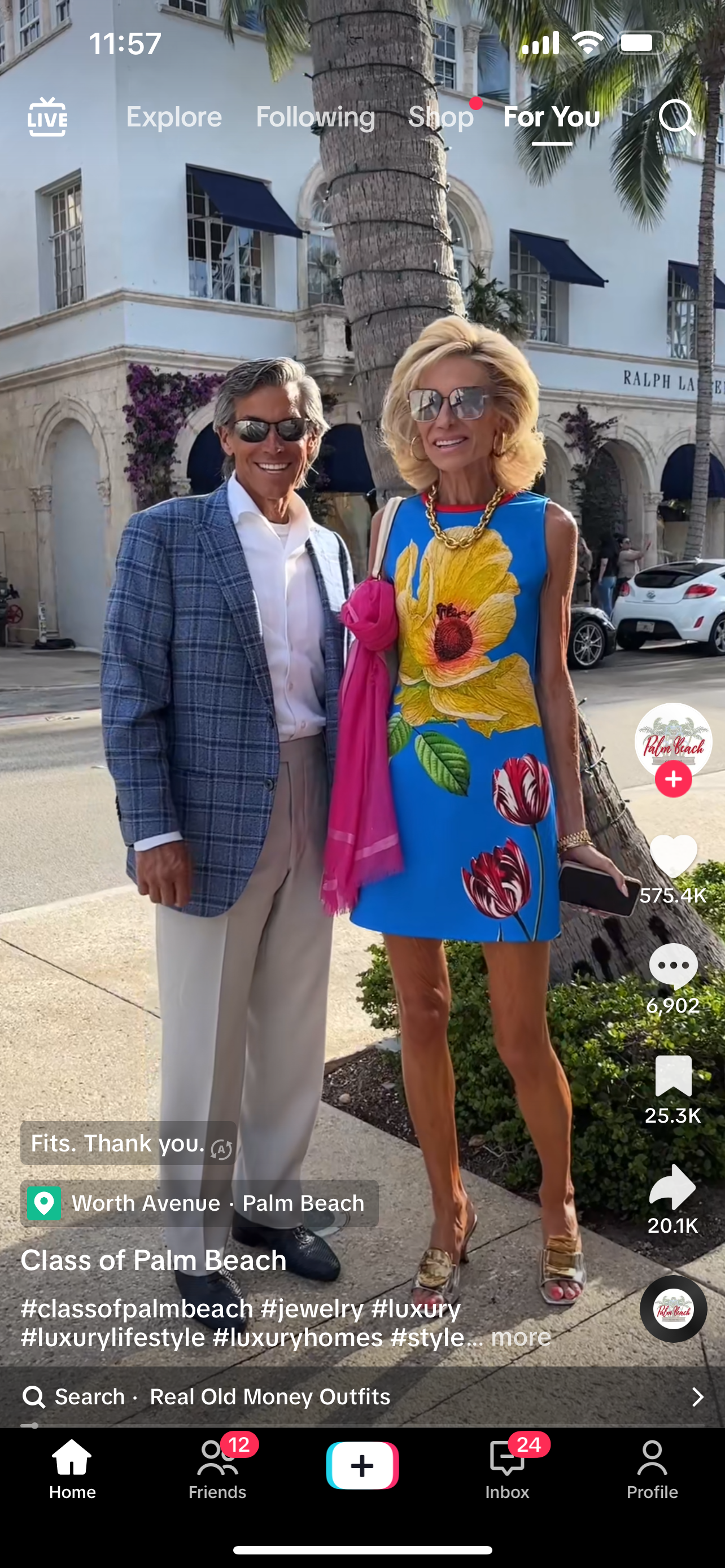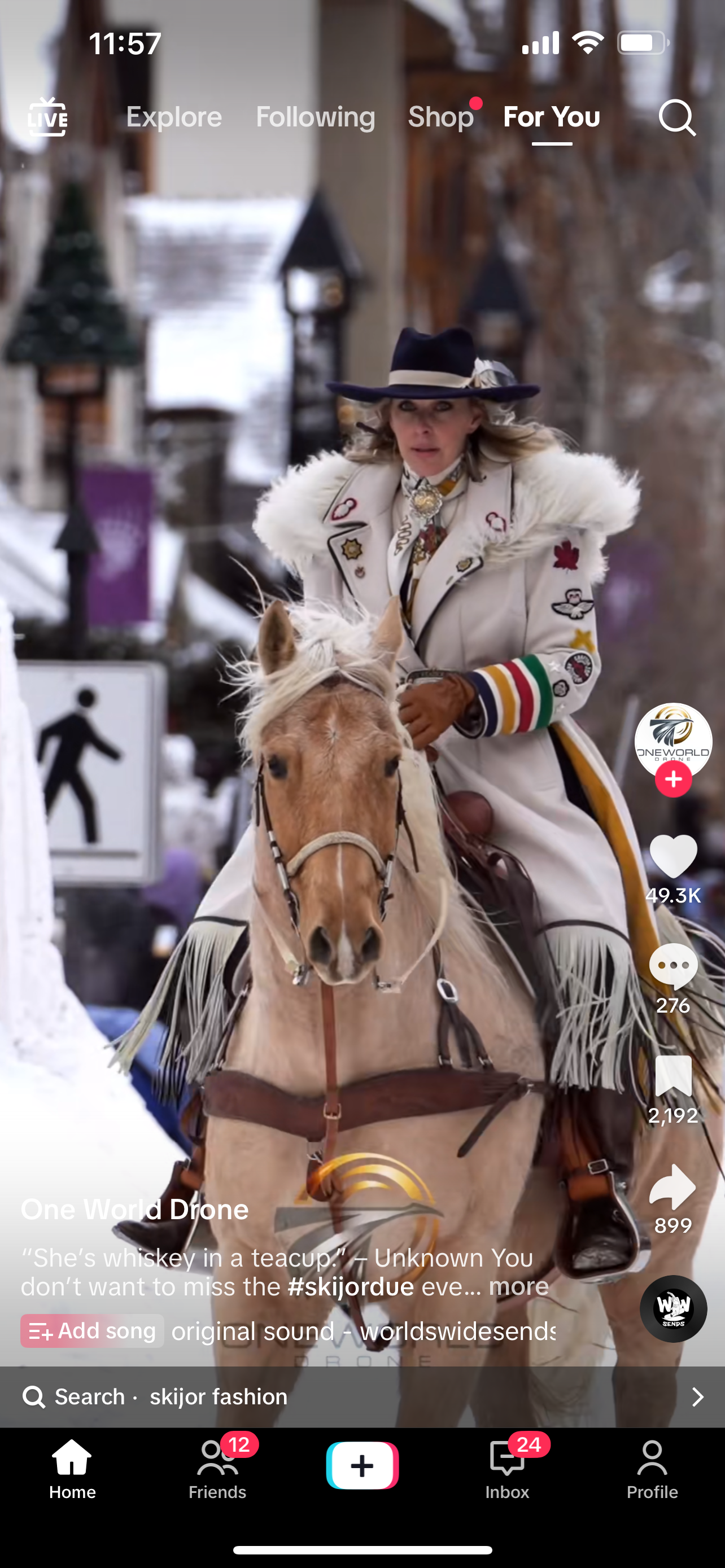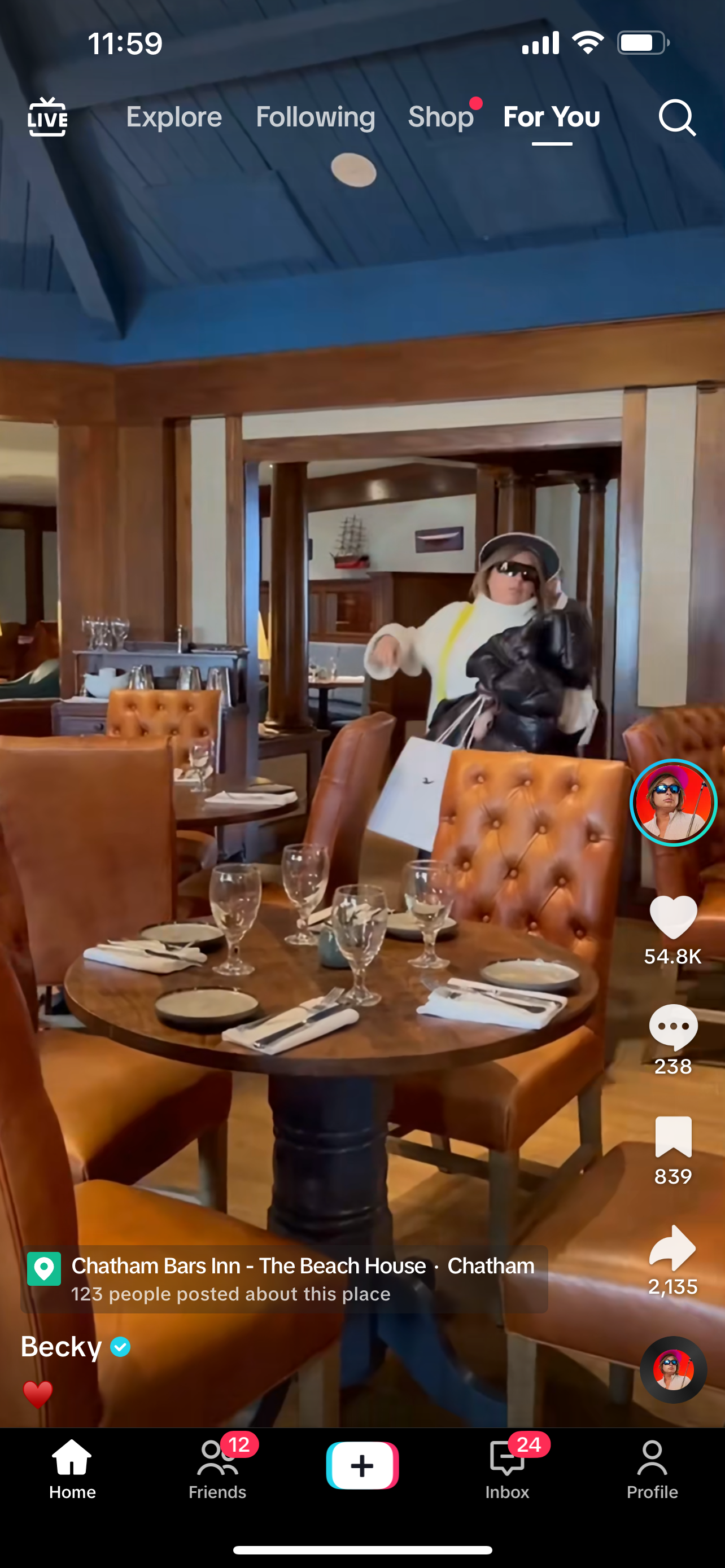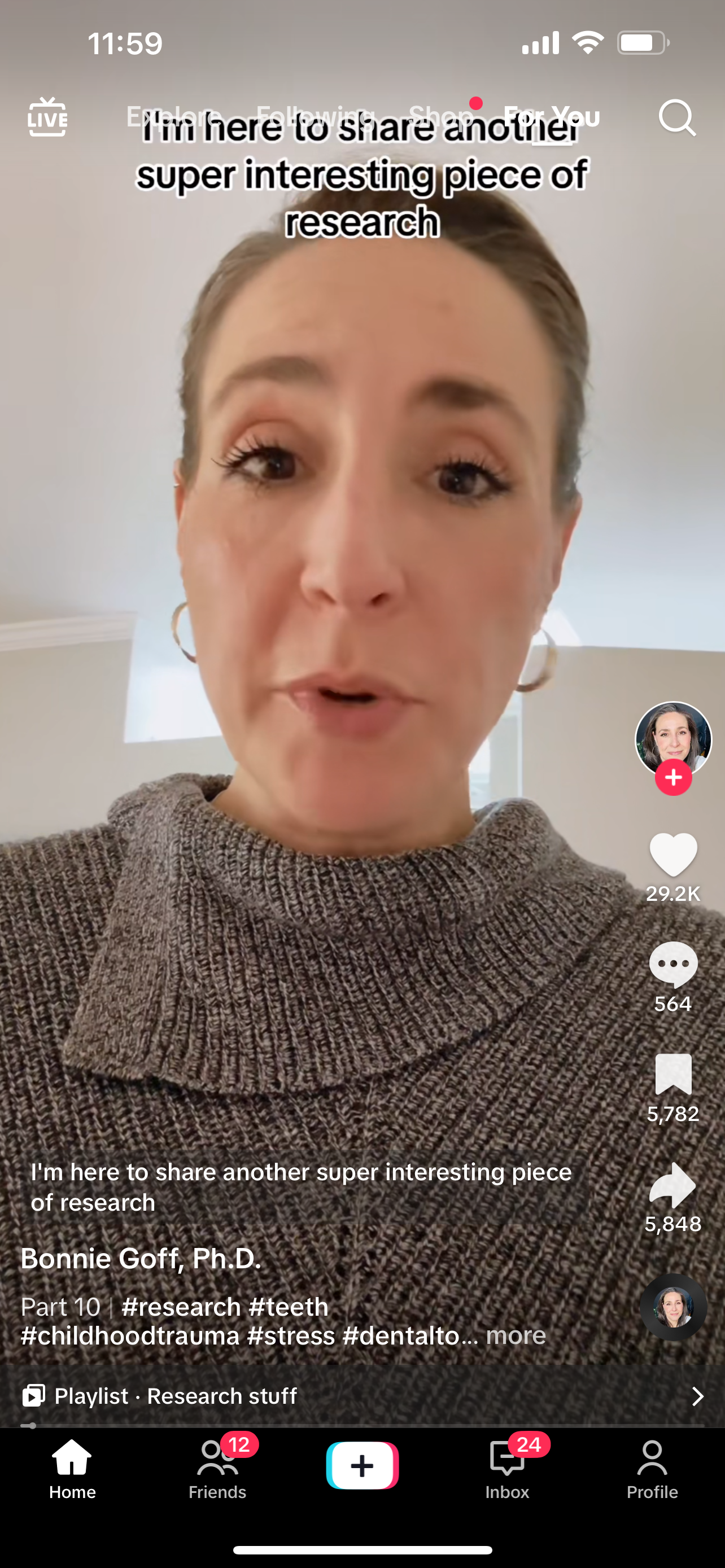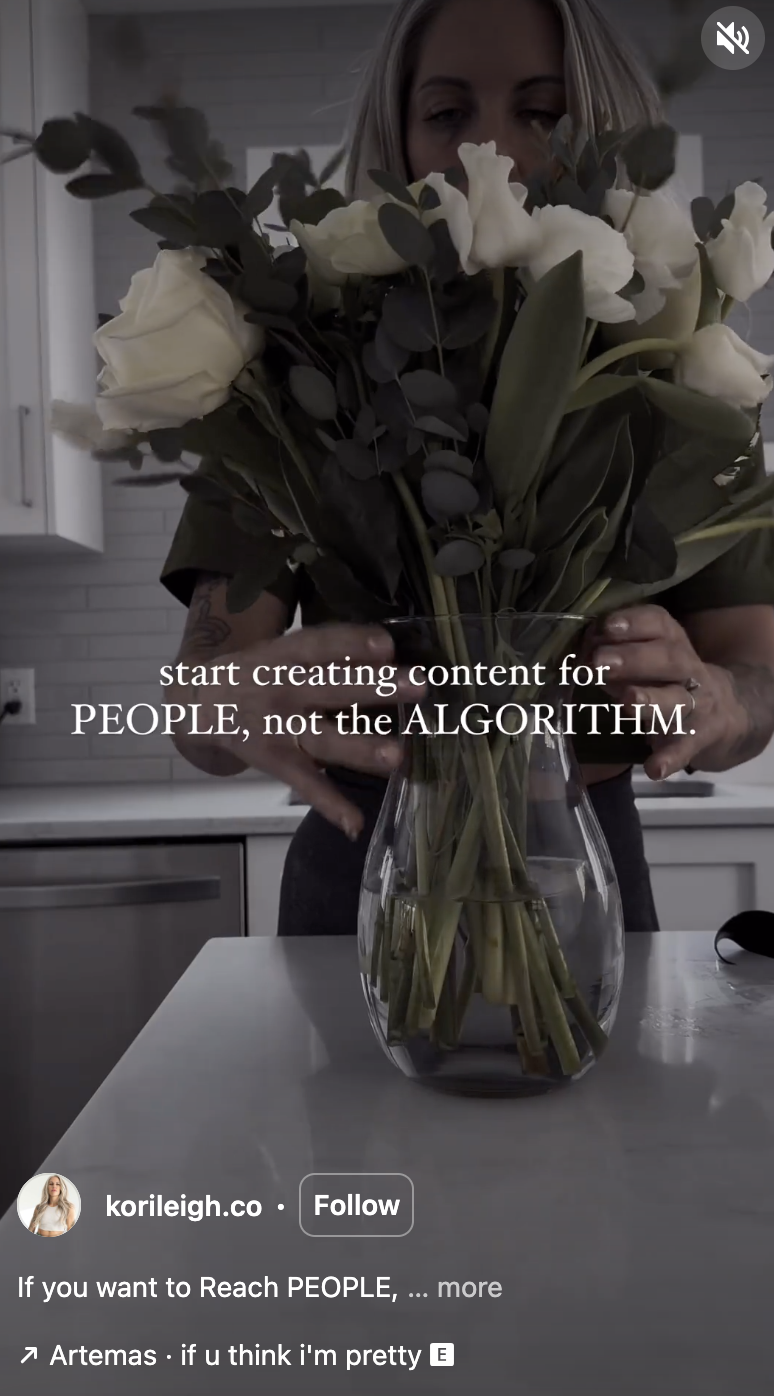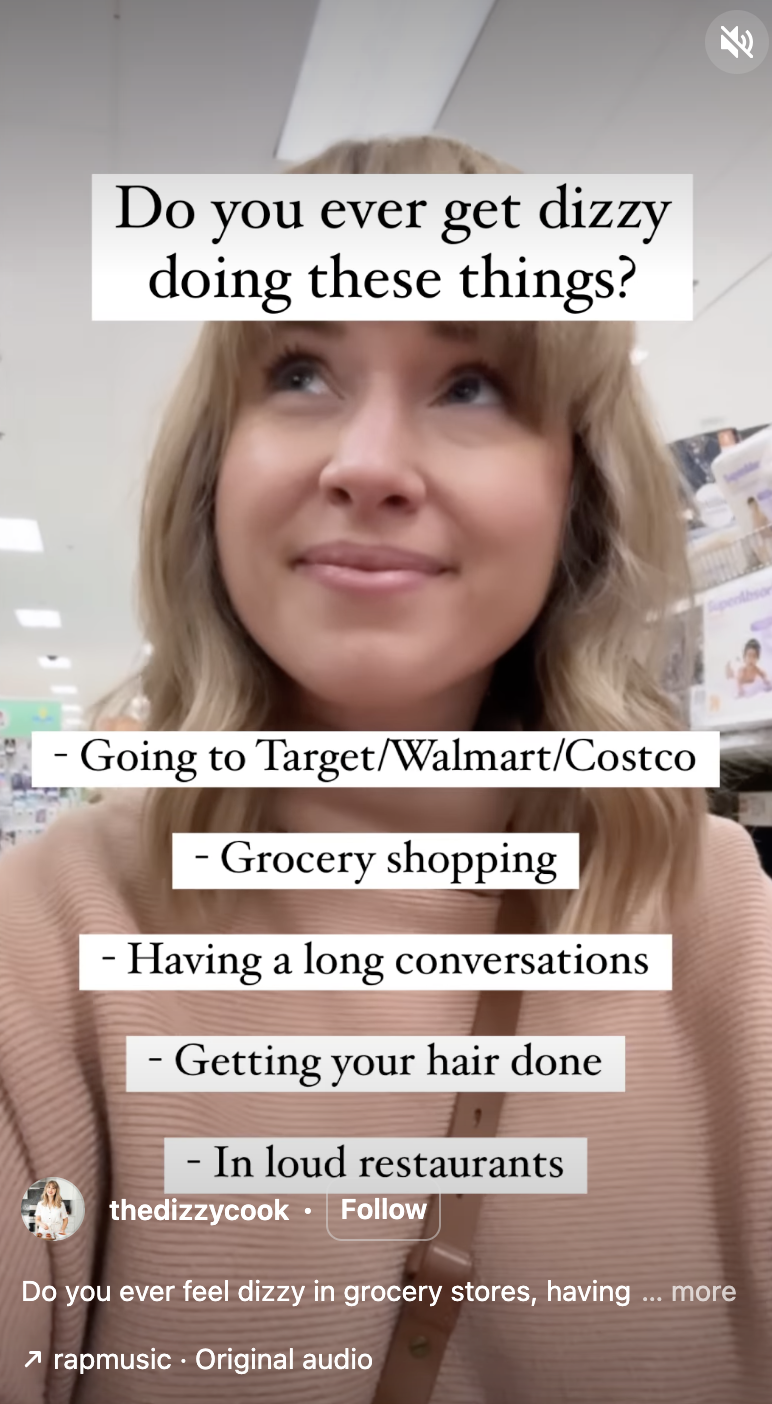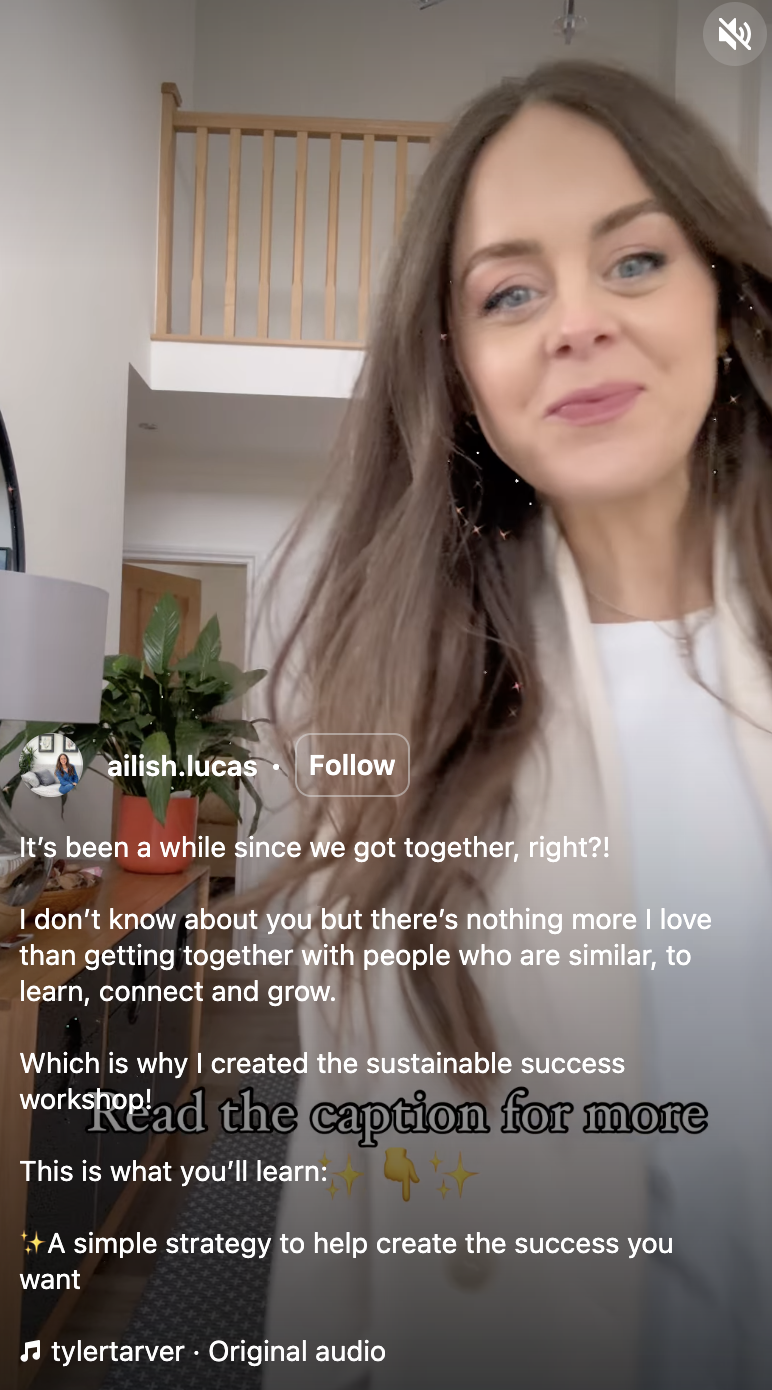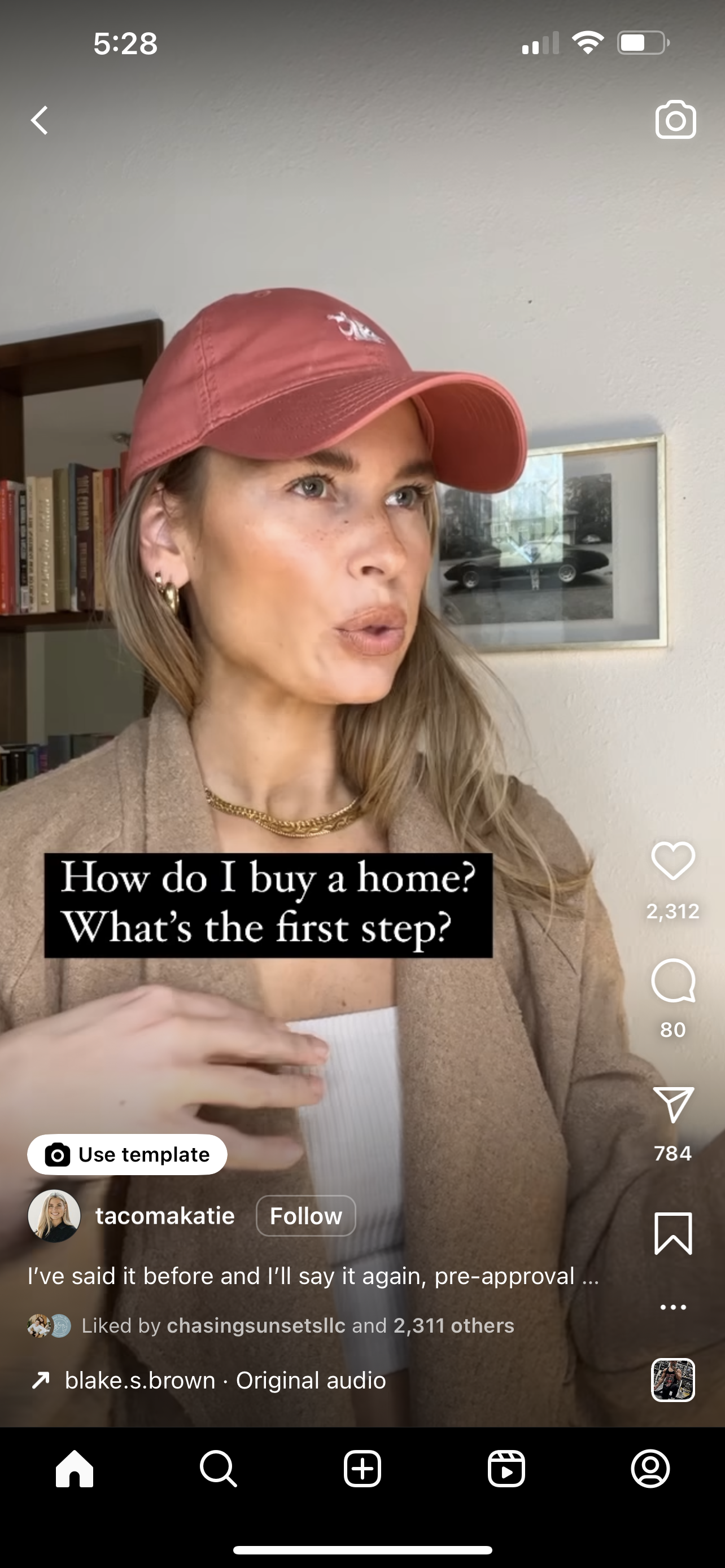Instagram Reels can be time-consuming to create and edit.
And, in the end, after you hit post you may be totally disappointed by the lack of engagement. Was it even worth it?
When you’re strategic with your Reels though, you can grow and nurture an audience of engaged ideal customers or clients who will be excited to join your email list, interact with your content, and becoming paying, raving fans.
Here’s a list of action items for your 2024 Reels to help your business be more visible and profitable on Instagram:
01 Talk To The Camera
The content that seems to perform best on Instagram right now is short-form video that shows your face in which you speak directly to the viewer. It’s like you’re talking to a friend on FaceTime.
It’s just human nature to be drawn to people’s faces and voices, so you’re making it more likely that people stop their scroll when you talk to the camera.
You don’t have to have your hair and makeup done to create Reels like this, either; I encourage you to show up as you are (comfortable). Sometimes this creates the feeling of intimacy and humanizes you and your brand. Yes, professionalism is important, but there’s a real relatable aspect to showing your audience what you’re like “off the clock.”
what to talk about
Try establishing content pillars, or “buckets” of topics that are important to you and your ideal customers or clients.
02 Use Reel Templates
You’ll post more Reels and get more momentum when it’s easier to get through the editing phase, and dragging-and-dropping your video clips into existing templates makes editing MUCH EASIER.
To find Reels templates, navigate to the Reels tab in your Instagram app, click the camera icon to start making a Reel, then select Templates at the bottom right of your screen. You can choose from Saved or Suggested templates. Just add video clips from your camera roll, and a caption.
03 Get Real With Your Followers
You don’t have to spill your guts to grow your audience on Instagram, but I encourage you to think about how you can get real with your followers:
Tell a story
Be a little vulnerable
Bring them behind the scenes
Show your face
People like to work with people and buy from people they like and trust. This is probably no surprise to you. But think about the content you like to consume online: It’s personal. There’s a story. You see a human on the other side. It teaches you something or inspires you. It’s probably relevant to your life experiences.
04 Lean Into A Personal Brand
The clearer you are about your online persona or your brand as a business owner, the easier it is to craft content that really resonates with the right people. Personal branding is how we create a recognizable, consistent identity for a person as the face of a business. Just like you probably recognize and have a lot of strong associations with logos like the Nike Swoosh or the Starbucks mermaid, a personal brand is helps your audience remember and create a connection with your work.
I often say: “People like to work with people.” It’s true; how much more likely are you to stop your scroll on social media and read a caption when you see a personal story than when you just see a corporate message?
A personal brand means you get to show up as a fully-formed human instead of a logo.
A PERSONAL BRAND CAN GIVE YOU EASY CONTENT IDEAS
It can be really tough to figure out what to say in social media posts, emails, or blog posts when you’re trying to represent a whole brand. But when you just have to represent yourself, you. can probably think of a lot of stories and experiences your audience will find relevant or interesting.
Plus, you already have a “voice,” or a way of communicating, so you don’t have to invent one for a new brand. I usually tell my clients to write for their personal brand the way they would speak to a customer or client.
Start by listing some of the things you feel very strongly about as a person and a professional. What are your non-negotiables? Your core values? Your soapbox issues? Create Reels about these topics and you will find that you attract more of the people you want to work with.
Brenee Brown, speaker and author, has a very clear personal brand.
05 Write Juicy Captions
Don’t leave your followers wanting more when it comes to your captions. I often find that women business owners skip the captions or just use it as a place to park a few hashtags.
But — think about it — if someone likes your photo or video, the first place they’ll go to learn more about you is the caption. They’ll hit the “More” option and see what else you have for them.
I actually recommend that my clients write their captions first so they get clear on the point of their post before they jump right to the Reel or photo: What is the “so what?” of your post for your audience? What’s the takeaway? What’s the hook?
what to write
Tell a story
Include a hook
Share recommendations
Share action items
Include a CTA (call to action)
Use a “top-line teaser,” or a compelling statement in the first line of your caption, so it is visible without expanding the caption with the “more” button
Your caption helps you get found by the right people when you include the right keywords.
06 Think About Keywords
Keywords or keyword phrases are the words your ideal customer or client would use to describe your work, industry, or niche. It’s important that you think about the language your audience actually uses. What would your ideal customer or client actually type into the search bar on Instagram that would lead them to you?
Instagram SEO
Instagram is a little, baby search engine. More and more, Instagram is cataloging their content to be found by search engines. And, within the platform, your audience is searching for creators and content that are relevant for them and their needs. The more you create content around the search terms your ideal customers or clients are using, the more likely you are to show up in their feeds.
what to do
Create content inspired by long-tail keyword phrases
Use hashtags inspired by your keywords (I recommend Slay.so, previously known as Hashtag Slayer, for this!)
Write captions! Include your keywords in the caption
Blog Post: 4 Steps To Start Keyword Research For Small Business
07 Optimize Your Instagram Bio
If your Reels viewers like your content and your caption, the logical next step for them is to click to your profile. Does your Instagram bio give them the information they need to know that you are relevant for them?
Your Instagram bio needs to clearly communicate your value for your ideal customers or clients. The questions your bio should answer for your ideal followers are:
What can you do for me?
Why should I follow you?
Why is your content relevant for me?
what to write in your bio
The key components of a good Instagram bio are:
Your offer
Your ideal customer
The outcomes or benefits you provide with your work, or your job title/industry
A call to action (CTA)
If you’re a location-based business, you need your city or area in your bio, too.
Blog Post: 4 Things You Need In Your Instagram Bio To Attract Ideal Customers
The Takeaway
The whole reason you post Reels as a business owner is to grow an online audience of people who will actually consume your content, and book or buy. Make sure you include these action steps when you create Reels so you can get the most bang for your buck.
Your Instagram content should be a sales machine for your small business.
If it’s not, you need a Profitable Profile Instagram Audit.
In your Audit, I’ll take a look at your profile and make you a custom list of changes to make to start seeing more followers, engagement, and sales every time you post, so you can grow your audience and your income.



























